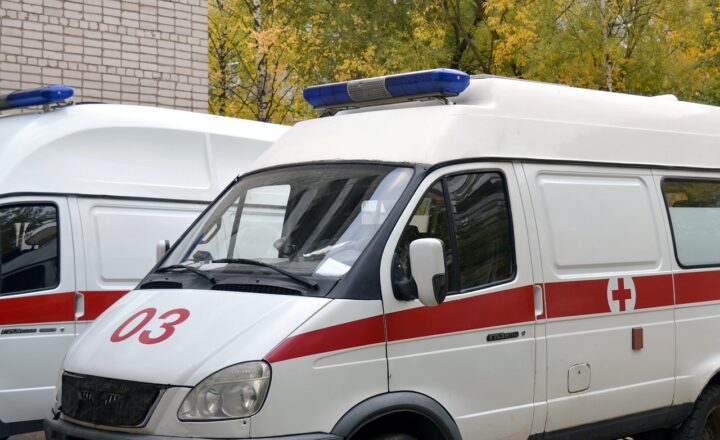Advanced Life Support in Ambulances: How High-Tech Equipment Saves Lives
November 13, 2024

In emergency medical situations, every second counts. The effectiveness of pre-hospital care can greatly impact the outcomes for patients facing life-threatening conditions. In this article, we will delve deep into the world of Advanced Life Support (ALS) in ambulances, exploring how high-tech equipment and specialized medical professionals work together to save lives in critical moments.
1. Understanding Advanced Life Support (ALS)
Advanced Life Support refers to a set of procedures and techniques used by paramedics and emergency medical technicians (EMTs) to provide critical care to patients experiencing severe medical emergencies. Unlike Basic Life Support (BLS), which includes fundamental life-saving procedures such as CPR and oxygen delivery, ALS encompasses a more comprehensive range of interventions, including:
– Advanced airway management: Insertion of endotracheal tubes for patients who cannot breathe adequately on their own.
– Cardiac monitoring: Using electrocardiogram (ECG) technology to monitor heart rhythms and detect arrhythmias.
– Drug administration: Delivering critical medications such as analgesics, anticoagulants, and antiarrhythmics intravenously.
– Defibrillation: Using an automated external defibrillator (AED) or manual defibrillator to restore normal heart rhythm in cases of cardiac arrest.
Advanced Life Support is an essential component of emergency medical services, providing a lifeline to patients before they reach a hospital.
2. The Role of Technology in ALS
Technology plays a vital role in enhancing the capabilities of paramedics in the field. Key technological advancements that have revolutionized ALS include:
#
2.1. Modern Ambulance Design
Modern ambulances are equipped with technology and features designed to optimize patient care during transport. These features include:
– Advanced lighting and sirens: Improving visibility and ensuring a quick response.
– Mobile communication systems: Allowing paramedics to communicate directly with hospitals to provide real-time updates and receive instructions.
– Power lift systems: Ensuring safer patient loading and unloading for both patients and emergency responders.
#
2.2. Telemedicine Integration
Telemedicine has transformed how paramedics deliver care. With telemedicine:
– Real-time consultations: Paramedics can communicate with physicians based in hospitals while treating patients, allowing for clinical guidance on complex cases.
– Remote monitoring: Health data can be transmitted to receiving facilities, enabling medical staff to prepare for incoming patients.
#
2.3. Advanced Monitoring Devices
High-tech monitoring devices provide critical information about a patient’s condition. These include:
– ECGs: Continuous monitoring helps paramedics recognize life-threatening arrhythmias.
– Pulse oximeters: Measuring blood oxygen levels, ensuring that patients are adequately oxygenated.
– Capnometers: Measuring the concentration of carbon dioxide in exhaled air to assess respiratory function.
The integration of these devices allows paramedics to make informed decisions quickly and provide effective interventions on-site.
3. Key Equipment Used in ALS
The following are essential pieces of equipment that characterize Advanced Life Support in ambulances:
#
3.1. Defibrillators
Automated External Defibrillators (AEDs) and manual defibrillators enable the delivery of electrical shocks to restore normal heart rhythms during cardiac arrest. These devices are intuitive and designed for ease of use, allowing bystanders and paramedics to act swiftly.
#
3.2. Ventilators
Portable ventilators provide mechanical assistance for breathing when patients are unable to breathe independently. This equipment facilitates proper oxygenation and ventilation until patients reach a hospital for further care.
#
3.3. Intravenous (IV) Equipment
IV systems allow for rapid access to the circulatory system for medication administration and fluid resuscitation. Multipurpose IV pumps can deliver precise doses of medications that can stabilize patients during transport.
#
3.4. Drug Bags and Emergency Medications
Paramedics are equipped with a range of emergency medications to treat various conditions, from pain management to cardiac arrest. Emergency drug bags contain life-saving medications, including epinephrine, nitroglycerin, and atropine.
4. Training and Expertise in ALS
The importance of Advanced Life Support is paralleled by the necessity for thorough training for paramedics and EMTs. Specialized training programs focus on the following:
– Advanced airway management techniques, including endotracheal intubation.
– Pharmacology and medication administration skills, ensuring paramedics can safely deliver drugs based on patient needs and conditions.
– Advanced cardiac life support (ACLS) certification, emphasizing the treatment of cardiac emergencies and critical thinking.
Continuous education and simulation training help improve paramedics’ readiness to handle various emergencies and utilize high-tech equipment effectively. Simulated training responses cultivate teamwork, equipping emergency personnel to deliver seamless and coordinated care in high-pressure situations.
5. Impact of ALS on Patient Outcomes
The implementation of Advanced Life Support significantly improves the chances of survival for patients facing critical emergencies. Studies have demonstrated that:
– Rapid intervention within the golden hour of trauma significantly increases survival rates.
– Advanced monitoring and treatment options allow for early identification of conditions such as cardiac arrest, stroke, or severe respiratory distress.
– Telemedicine consultations can result in timely interventions that stabilize patients before arrival at a hospital.
As technology and training continue to evolve, paramedics play a crucial role in ensuring that patients receive high-quality emergency care even before reaching a hospital’s emergency department. In essence, the combination of sophisticated equipment and skilled professionals creates a vital safety net for individuals in crisis.
Conclusion
Advanced Life Support in ambulances represents the intersection of health care and technology, ensuring that critical care is delivered efficiently and effectively during emergencies. As technology continues to advance, so too will the capabilities of paramedics, further enhancing patient outcomes. By understanding the intricacies of ALS, we recognize the incredible work that emergency medical professionals engage in every day to save lives and provide support in times of need. Investing in high-tech equipment, comprehensive training, and telemedicine integration will ensure that our emergency response systems remain at the forefront of healthcare delivery, ready to face future challenges with confidence.
In a world where emergencies can occur at any moment, having advanced life support systems in place demonstrates our commitment to preserving life, making a measurable difference during the most critical moments.








